The Definitive Handbook for Yoga Mobile App Development by Alternative-spaces
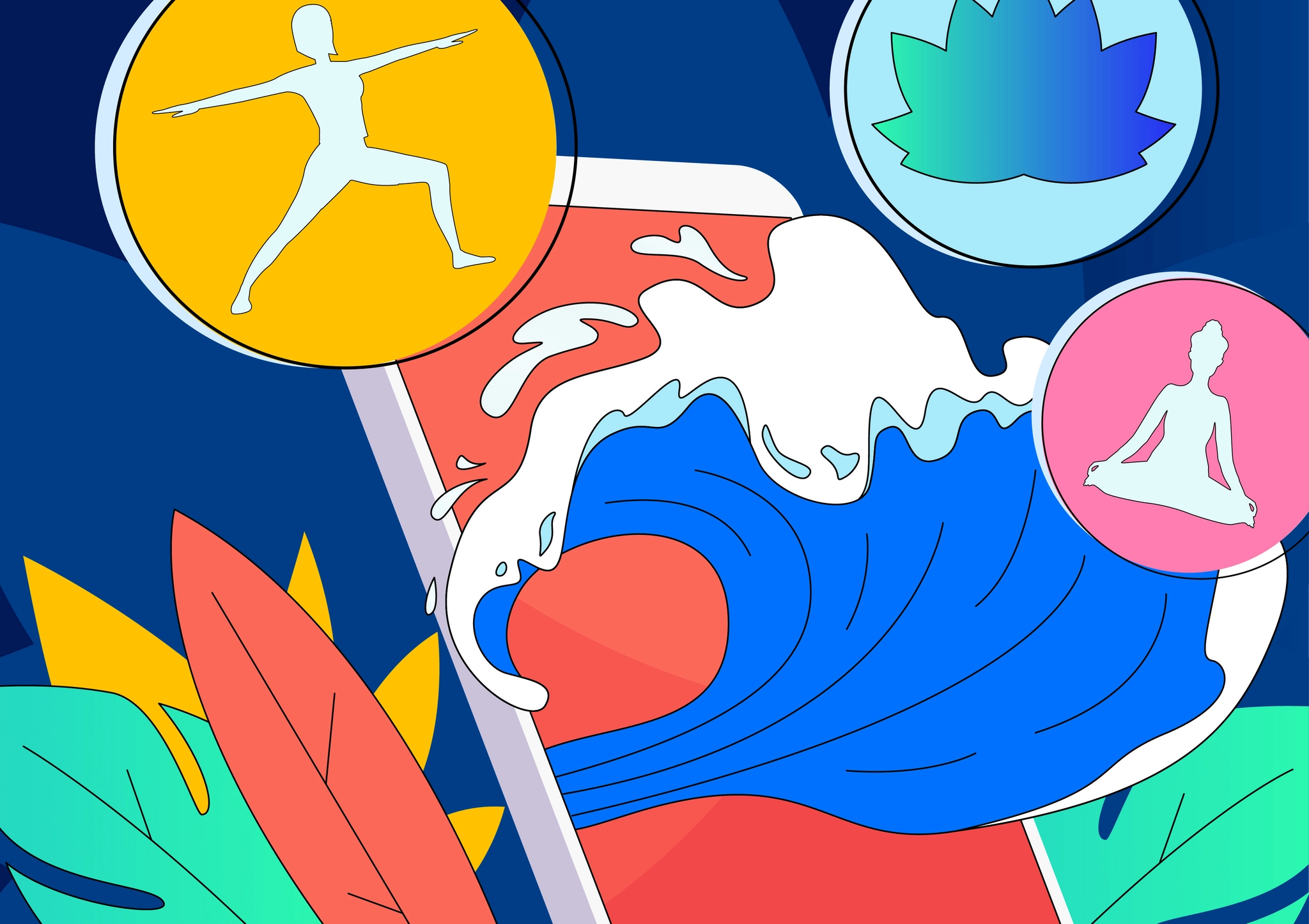
Yoga transcends the realm of mere trendy exercise – it has evolved into a global phenomenon, captivating over 300 million practitioners worldwide. When harmonized with mobile technology, it opens an expansive realm of possibilities for startups and developers to harness.
Within the pages of this article, we embark on a journey to uncover the core facets of triumphant yoga apps, guiding you through the essential strides in birthing your very own yoga application. With a proven track record of guiding businesses in the fitness industry, Alternative-spaces brings its expertise to the forefront, ready to unravel the secrets of crafting captivating yoga apps. We’ll delve into the requirements that make a yoga app stand out, the costs involved, and other crucial details to help you succeed in the competitive world of yoga application development.
Table of contents
- Overview of the Growing Importance of Mobile Apps in the Yoga Industry
- Top Yoga Mobile Apps on the Market
- Major Yoga Mobile App Types to Consider
- Critical and Nice-to-Have Features of the Yoga Mobile App
- Step-by-Step Guide on How to Develop a Yoga Mobile App
- What Technologies Are Needed for Yoga Mobile App Development?
- Cost Considerations for Yoga App Development
- Alternative-spaces as Your Sport and Fitness App Development Partner
- Summing up
- FAQ
Overview of the Growing Importance of Mobile Apps in the Yoga Industry
Yoga has gained widespread popularity as a means of exercise and relaxation on a global scale. As reported by The Good Body, the practice of yoga is embraced by a staggering 300 million individuals across the globe. The global market for yoga has surged to a remarkable valuation of more than $105 billion, with an anticipated annual growth rate of 9%. Predictions indicate that by 2028, this industry could attain an impressive valuation of $177 billion.
In terms of gender distribution, women constitute the majority of practitioners, with the male demographic accounting for 28%, a factor that should not be overlooked.
The landscape of yoga has witnessed significant shifts due to the impact of pandemic, resulting in the closure of numerous physical studios. This vacuum has paved the way for the app industry to channel its resources into this domain.
Furthermore, the surge in stress and anxiety levels since 2019 has prompted a substantial number of individuals to seek solace in mindfulness, meditation, and yoga for stress relief. This trend has propelled numerous businesses to explore the development of healthcare apps to meet this growing demand. The global crisis of 2022 has further intensified this inclination.
For a more comprehensive grasp of designing a yoga-centric app, let’s delve into an overview of some of the most popular programs available in the contemporary market.

Top Yoga Mobile Apps on the Market
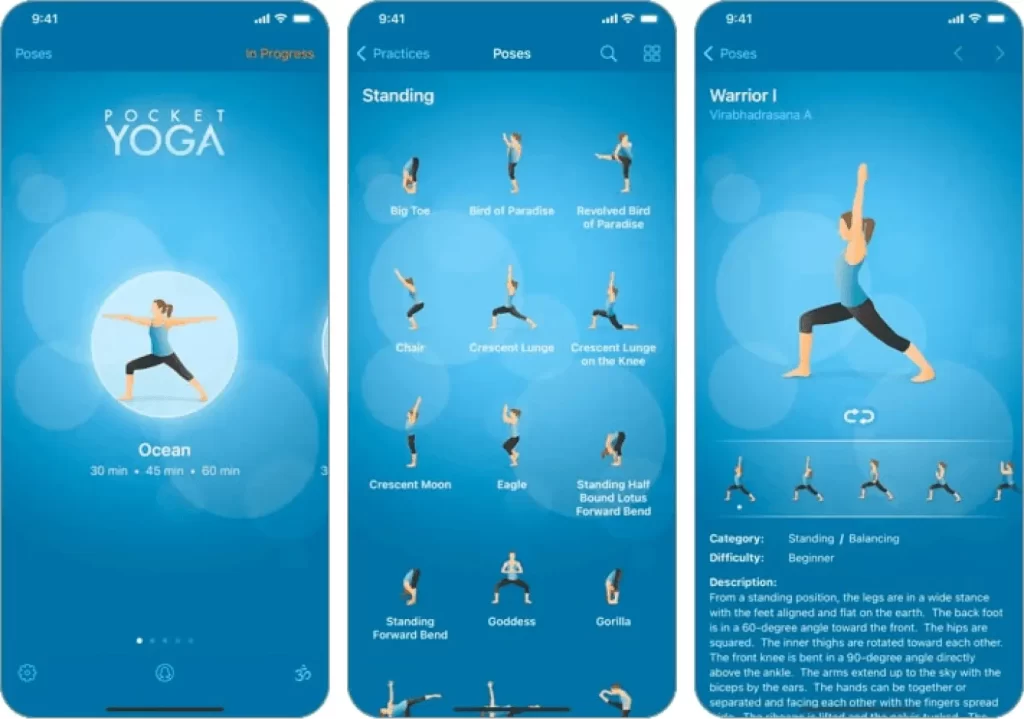
In the ever-expanding realm of wellness and digital technology, several yoga apps have risen to prominence, catering to a diverse audience seeking flexibility, mindfulness, and physical well-being. Here’s a glimpse into some of the most popular yoga apps in today’s landscape:
- Down Dog: This app offers dynamic and customizable yoga sessions. Users can select their level, duration, focus area, and more. The app’s adaptability makes it suitable for practitioners of all skill levels.
- Yoga for Beginners – Mind+Body: As the name suggests, this app is tailored for those new to yoga. It provides step-by-step guidance and explanations for fundamental poses, ensuring a gentle introduction to the practice.
- Daily Yoga: With a wide range of classes, from beginner to advanced, Daily Yoga provides users with an assortment of routines that target specific areas, such as flexibility, strength, or relaxation. The app also offers mindfulness and meditation practices.
- Asana Rebel: This app blends yoga with high-intensity interval training (HIIT) to create a comprehensive fitness experience. It combines traditional yoga poses with cardio and strength-building exercises.
- Glo Yoga: Formerly known as YogaGlo, this app offers an extensive library of yoga classes taught by renowned instructors. Users can choose classes based on style, duration, and skill level.
- Pocket Yoga: Catering to users on the go, Pocket Yoga offers a visual guide to various poses, allowing practitioners to follow along without needing an internet connection. It’s a handy reference for both beginners and experienced yogis.
- Peloton: Known primarily for its cycling content, Peloton also features a yoga section that offers live and on-demand yoga classes. This app is ideal for those who want to switch between various workouts.
- 5 Minute Yoga: For those with busy schedules, this app provides quick and effective yoga routines that can be completed in just five minutes. It’s a convenient option to incorporate a brief yoga practice into daily life.
- Simply Yoga: Targeting simplicity and accessibility, this app offers straightforward yoga routines that guide users through a series of poses. It’s an excellent choice for beginners or individuals seeking uncomplicated sessions.
- Breethe: While not exclusively a yoga app, Breethe offers a variety of mindfulness, meditation, and yoga practices. It’s a comprehensive platform for those looking to enhance their mental and physical well-being.
These popular yoga apps exemplify the fusion of technology and holistic well-being, empowering users to practice yoga in a manner that aligns with their preferences, schedules, and goals. Now, when you know top yoga mobile apps, let’s dive deeper into their main types and features.
Read also about latest mobile app development trends.
Major Yoga Mobile App Types to Consider
Yoga mobile apps come in various types, each catering to different aspects of practitioners’ needs and preferences. Here are some prominent app types, along with famous examples:
Guided Yoga Practice Apps
These apps offer a range of recommended yoga classes led by experienced instructors.
- Example: “Glo” (formerly known as YogaGlo) provides an extensive library of classes across various yoga styles and levels.
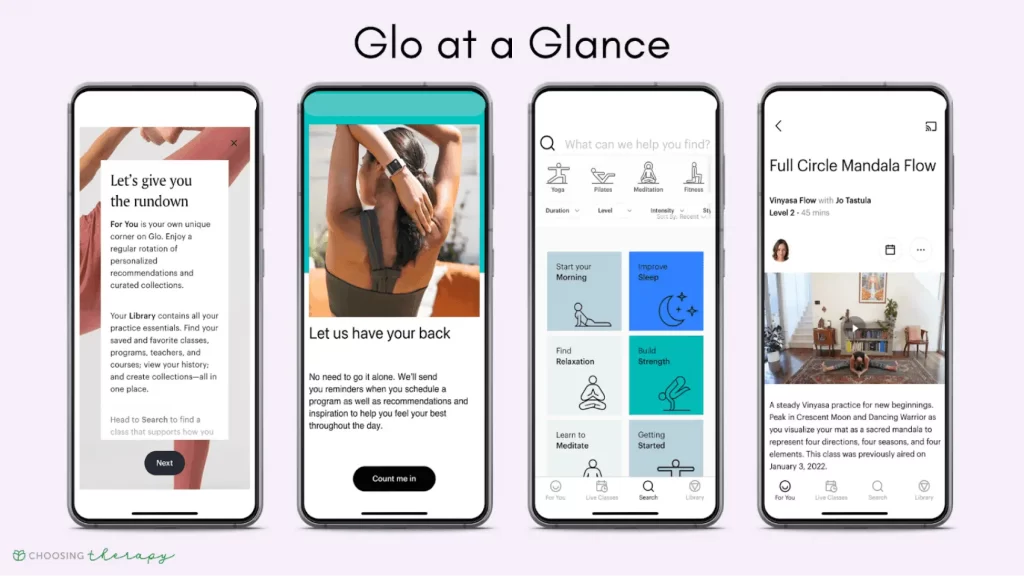
Personalized Yoga Apps
These apps create customized yoga routines based on individual preferences and goals.
- Example: “Asana Rebel” offers personalized workouts that combine yoga and fitness exercises tailored to users’ objectives.
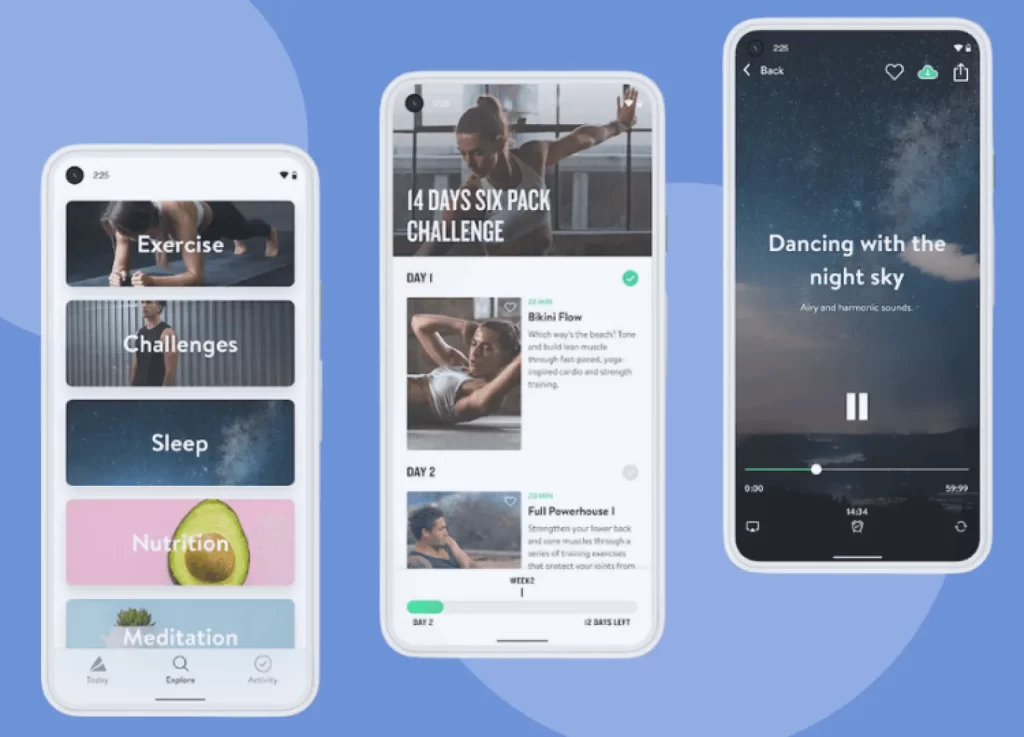
Mindfulness and Meditation Apps
While not exclusively yoga-focused, these apps often include yoga practices, meditation, and mindfulness content.
- Example: “Calm” features guided yoga sessions, meditation exercises, and soothing sleep stories.

Yoga Pose Reference Apps
These apps provide comprehensive guides to yoga poses, offering step-by-step instructions and visual aids.
- Example: “Daily Yoga” provides detailed instructions, videos, and animations for various yoga poses.
Live Streaming Yoga Classes
These apps offer real-time streaming of yoga classes, allowing users to join sessions remotely.
- Example: “Zoom” and platforms like Instagram and Facebook Live have been utilized by yoga instructors for live classes.
Community and Social Apps
These apps facilitate connections among yoga enthusiasts, allowing users to find local classes and events and connect with like-minded individuals.
- Example: “YogaTrail” helps users discover nearby yoga studios & classes and connect with fellow practitioners.
Specialized Yoga Apps
These apps focus on specific aspects, such as prenatal yoga, yoga for seniors, or yoga for runners.
- Example: “Prenatal Yoga” provides safe and tailored yoga routines for pregnant individuals.
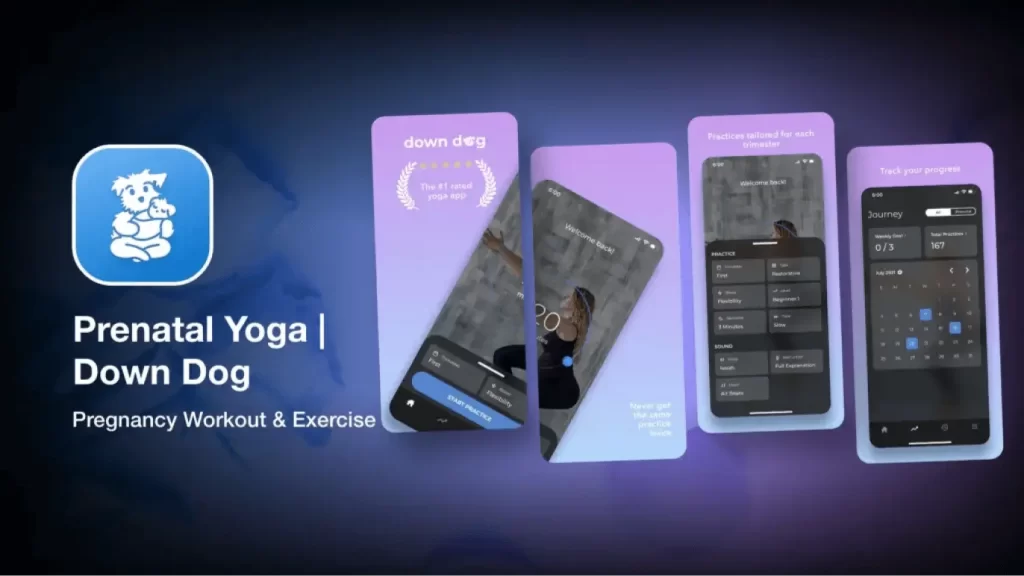
Yoga Challenge Apps
These apps offer structured challenges, often spanning a specific duration, to encourage consistent practice and progress.
- Example: “30-Day Yoga Challenge” guides users through a month-long journey of daily yoga practice.
These diverse app types demonstrate how technology has seamlessly integrated with the ancient practice of yoga, offering practitioners a range of tools to enhance their wellness journey.
Critical and Nice-to-Have Features of the Yoga Mobile App
Yoga mobile app development involves integrating various features to provide users with a comprehensive and engaging experience. Here are some key features required to create a yoga mobile app:
Key features:
- User Profiles and Registration: Users can create personalized profiles, track progress, and store preferences.
- Class and Video Libraries: Offer an extensive collection of pre-recorded classes categorized by skill level, style, duration, and focus.
- Live Streaming and Real-Time Classes: Enable users to join live yoga classes remotely, fostering real-time interaction with instructors and fellow participants.
- Personalized Workouts: Create custom yoga routines based on user preferences, goals, fitness levels, and time availability.
- Yoga Pose Guide: Provide a comprehensive library of yoga poses with detailed instructions, images, and videos.
- Guided Meditation and Relaxation: Include meditation and relaxation sessions to complement yoga, promoting mental well-being.
- Progress Tracking: Allow users to track their practice frequency, duration, and progress through achievements and milestones.
- Offline Access: Enable users to download classes and content for offline access, enhancing flexibility in practice.
- Social Interaction: Integrate social features to connect users with fellow practitioners, allowing them to share achievements, challenges, and experiences.
- Notifications and Reminders: Send reminders for upcoming classes, meditation sessions, or daily practice routines.
- Instructor Profiles: Provide detailed profiles of yoga instructors, showcasing their expertise and teaching style.
- Integration with Wearable Devices: Connect with fitness trackers and wearables to monitor heart rate, calories burned, and other health metrics during practice.
- Multi-Language Support: Offer content and instructions in multiple languages to cater to a global user base.
- Subscription and Payment Integration: Implement subscription models for premium content, allowing users to access exclusive classes and features.
- User Feedback and Ratings: Enable users to provide feedback and rate classes, helping others make informed choices.
- Progressive Challenges and Programs: Introduce structured challenges and multi-week programs to encourage consistent practice and goal achievement.
- Offline Support: Allows users to download classes and practice offline, ideal for users with limited internet access.
- Integration with Music and Playlists: Enable users to play their favorite music or soothing sounds during practice.
- Push Notifications: Send notifications about new classes, updates, and personalized recommendations.
- User Support and Help Center: Provide customer support and a dedicated help center for users to resolve issues and inquiries.
Nice-to-Have Features:
- Virtual Reality (VR) Support: Offer immersive yoga experiences through VR technology.
- Biometric Authentication: Users can access the app through biometric methods like fingerprint or facial recognition.
- AR Pose Alignment: Use augmented reality to guide users in achieving correct yoga poses.
- AI-Powered Recommendations: Provide personalized class recommendations based on user preferences and progress.
- Gamification Elements: Integrate gamified features like challenges, rewards, and leaderboards.
- User-Generated Content: Allow users to share their practice videos and routines.
- Interactive Challenges: Include social challenges for users to participate in together.
- Live Chat with Instructors: Enable real-time communication between users and instructors during live sessions.
- Health and Wellness Resources: Offer articles, blogs, and resources related to yoga, fitness, and well-being.
- Virtual Yoga Retreats: Organize virtual events that simulate a yoga retreat experience.
- Mindfulness Reminders: Send prompts for taking short mindfulness breaks throughout the day.
- Yoga Challenges with Friends: Allow users to create and participate in challenges with their friends.
- Video Analysis: Provide users with video analysis and feedback on their poses.
By incorporating these key features, your yoga mobile app can deliver a comprehensive and enriching user experience, catering to their diverse needs and enhancing their wellness journey.
Step-by-Step Guide on How to Develop a Yoga Mobile App
Building a successful yoga mobile app requires careful planning and execution. Here’s a simplified 7-step guide to yoga & meditation app development:
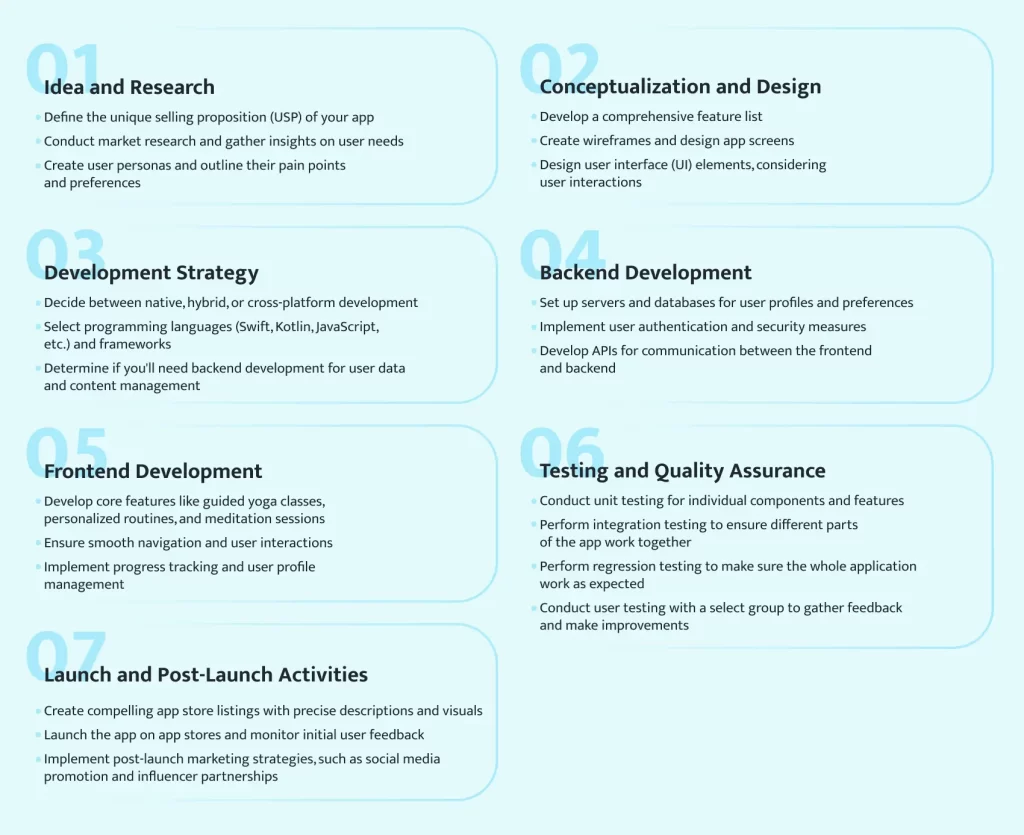
Step 1: Idea and Research
Define your app’s concept and target audience. Research the yoga app market, identify trends, and understand user needs. Determine what sets your app apart and how it will solve specific problems or offer unique value.
Milestones for this step:
- Define the unique selling proposition (USP) of your app.
- Conduct market research and gather insights on user needs.
- Create user personas and outline their pain points and preferences.
Step 2: Conceptualization and Design
Create a detailed plan for your app’s features, layout, and user flow. Sketch wireframes and create mockups to visualize the app’s design. Ensure the user interface is intuitive, user-friendly, and aligns with your app’s goals.
Milestones for this step:
- Develop a comprehensive feature list.
- Create wireframes and design app screens.
- Design user interface (UI) elements, considering user interactions.
Step 3: Development Strategy
Choose the platform for your app (iOS, Android, or both) and the development approach (native, hybrid, or cross-platform). Select the programming languages, frameworks, and tools best suit your project’s requirements.
Milestones for this step:
- Decide between native, hybrid, or cross-platform development.
- Select programming languages (Swift, Kotlin, JavaScript, etc.) and frameworks.
- Determine if you’ll need backend development for user data and content management.
Step 4: Backend Development
Set up the backend infrastructure to manage user profiles, data storage, and content delivery. Implement user authentication, content management, and integration with external services (e.g., payment gateways).
Milestones for this step:
- Set up servers and databases for user profiles and preferences.
- Implement user authentication and security measures.
- Develop APIs for communication between the front end and backend.
Step 5: Frontend Development
Begin coding the front end of your app based on the design and wireframes. Develop key features like guided classes, personalized routines, live streaming, and progress tracking. Ensure a smooth user experience and test the app’s usability.
Milestones for this step:
- Develop core features like guided yoga classes, personalized routines, and meditation sessions.
- Ensure smooth navigation and user interactions.
- Implement progress tracking and user profile management.
Step 6: Testing and Quality Assurance
Thoroughly test your app across different devices, platforms, and scenarios. Identify and fix bugs, glitches, and performance issues. Conduct user testing to gather feedback and make necessary improvements.
Milestones for this step:
- Conduct unit testing for individual components and features.
- Perform integration testing to ensure different parts of the app work together.
- Perform regression testing to make sure the whole application work as expected
- Conduct user testing with a select group to gather feedback and make improvements.
Step 7: Launch and Post-Launch Activities
Prepare for app launch by creating app store listings, writing compelling descriptions, and designing appealing visuals. Launch the app on app stores and promote it through social media, influencers, and targeted marketing campaigns.
Milestones for this step:
- Create compelling app store listings with precise descriptions and visuals.
- Launch the app on app stores and monitor initial user feedback.
- Implement post-launch marketing strategies, such as social media promotion and influencer partnerships.
Remember that building a successful app is an ongoing process. After launch, monitor user feedback, track app performance, and continually update and improve your app to keep users engaged and satisfied.
Read also about walk and run tracking app development.
What Technologies Are Needed for Yoga Mobile App Development?
Building a yoga mobile app requires a combination of frontend and back-end technologies to create a seamless user experience and manage data effectively. Here are the critical technologies needed for different aspects of yoga mobile app development:

Front-End Technologies:
Programming Languages:
- Swift (iOS) or Kotlin (Android): Primary languages for native app development on iOS and Android platforms, respectively.
- JavaScript: For hybrid app development using frameworks like React Native or Ionic.
User Interface (UI) Frameworks:
- UIKit (iOS): Native framework for building user interfaces on iOS.
- Android Jetpack: Collection of libraries and guidelines for Android UI development.
- React Native: JavaScript framework for building cross-platform apps with a native feel.
- Flutter: UI toolkit by Google for creating natively compiled mobile, web, and desktop applications from a single codebase.
User Experience (UX) Design Tools:
- Adobe XD, Sketch, and Figma: Design tools for creating wireframes, mockups, and interactive prototypes.

Back-End Technologies:
Server-Side Programming Languages:
- Node.js: JavaScript runtime for building scalable server-side applications.
- Python (Django, Flask), Ruby (Ruby on Rails), Java (Spring Boot): Popular languages and frameworks for backend development.
Databases:
- MySQL, PostgreSQL, SQLite: Relational databases for structured data storage.
- MongoDB, Firebase: NoSQL databases suitable for flexible data storage and real-time capabilities.
Server Hosting and Deployment:
- Amazon Web Services (AWS), Microsoft Azure, Google Cloud Platform (GCP): Cloud platforms for hosting servers and managing resources.
- Heroku, DigitalOcean: User-friendly platforms for deploying web applications.
API Development:
- RESTful APIs or GraphQL: For communication between the app’s front end and back end.
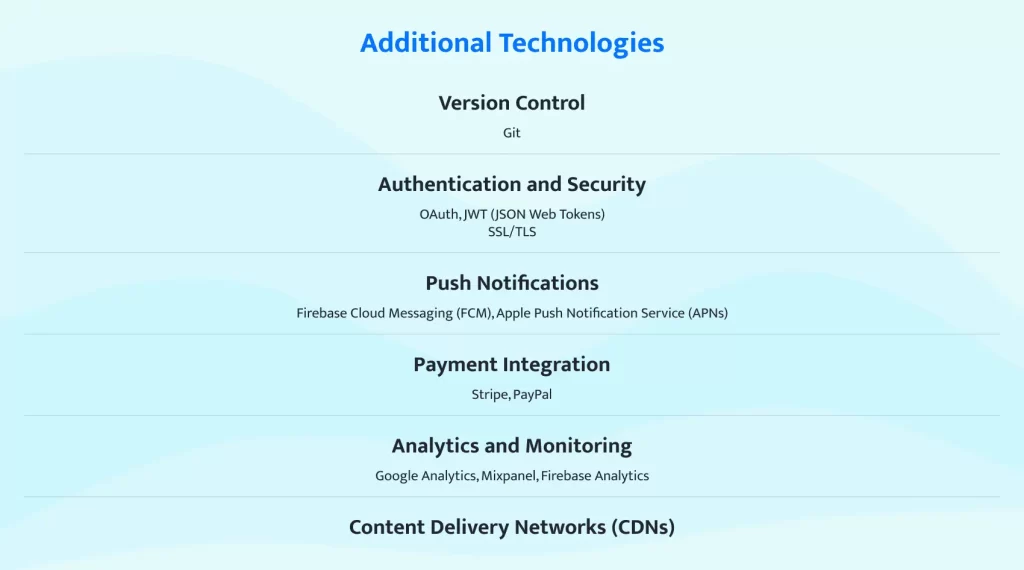
Additional Technologies:
Version Control:
- Git: For managing and tracking changes in your codebase.
Authentication and Security:
- OAuth, JWT (JSON Web Tokens): For user authentication and data security.
- SSL/TLS: To ensure secure communication between the app and server.
Push Notifications:
- Firebase Cloud Messaging (FCM), Apple Push Notification Service (APNs): To send users notifications.
Payment Integration:
- Stripe, PayPal: To enable in-app purchases and subscriptions.
Analytics and Monitoring:
- Google Analytics, Mixpanel, Firebase Analytics: Track user behavior and app performance.
Content Delivery Networks (CDNs):
- For delivering media content efficiently to users.
The choice of technologies will depend on your app’s requirements, the platform(s) you’re targeting, your development team’s expertise, and your long-term goals for the app.
Cost Considerations for Yoga App Development

The cost of developing a yoga mobile app can vary significantly based on app complexity, features, design, platform, and development approach. Here are some cost considerations to keep in mind when planning the development of your yoga app:
- App Complexity and Features: The more complex the features and functionality, the higher the development cost. Basic apps with essential elements will generally cost less than apps with advanced features like real-time streaming, personalized routines, and social integration.
- Design and User Interface: A well-designed and user-friendly interface requires skilled designers and can contribute to higher costs. Investing in a visually appealing and intuitive design can enhance user engagement and satisfaction.
- Platform Selection: Developing for both iOS and Android platforms will increase costs compared to choosing one platform. Native development is generally more expensive than hybrid or cross-platform approaches but can provide a better user experience.
- Development Approach: Hybrid or cross-platform development can be more cost-effective, allowing you to use a single codebase for multiple platforms. However, native development might provide better performance and user experience.
- Backend Development and APIs: If your app requires a server backend and APIs for features like user accounts, data storage, and content delivery, these development efforts will contribute to the overall cost.
- Third-Party Integrations: Integrating payment gateways, social media logins, analytics tools, and other third-party services can add to the development cost.
- Testing and Quality Assurance: Rigorous testing and quality assurance are essential to ensure a bug-free and smooth app. Allocating time and resources for testing may increase development costs.
- Maintenance and Updates: Post-launch maintenance, bug fixes, updates, and feature enhancements are ongoing costs that should be considered.
- Marketing and Launch: Promoting your app through marketing efforts, including app store optimization and advertising campaigns, is a significant cost to factor in.
- Development Team: The size and expertise of your development team will impact costs. Hiring experienced developers, designers, and QA testers might involve higher salaries or hourly rates.
Read also about mobile app development cost.
Our experts can provide approximate cost estimations for your yoga app based on your specific requirements. However, please note that these estimations are subject to change based on project details and market fluctuations. For this response, we’ll provide a general range of costs:
- Basic Yoga App: A basic yoga app with essential features like guided classes, pose references, and user profiles can cost anywhere from $20,000 to $50,000.
- Intermediate Yoga App: An app with additional features such as personalized routines, progress tracking, and meditation sessions may range from $50,000 to $100,000.
- Complex Yoga App: If your app includes features like live streaming, social interaction, gamification, and integration with wearables, the cost could exceed $100,000 and go up to $200,000 or more.
Here’s the approximate amount of time and investment required to implement all the necessary parts of a yoga app.
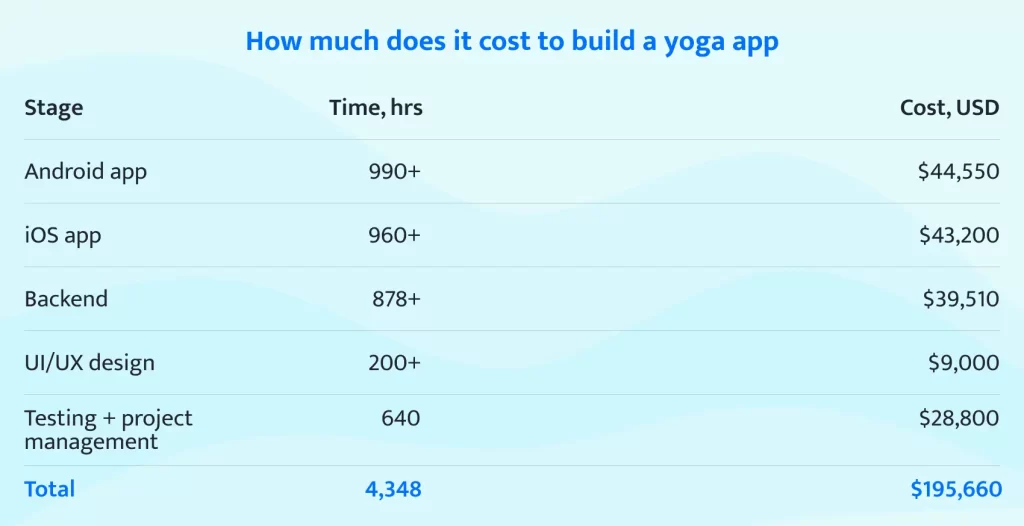
Please keep in mind that these estimates are indicative and can vary based on factors such as the complexity of the design, the number of platforms (iOS and Android), backend development requirements, and the development timeline. We can provide a more accurate estimation based on a detailed understanding of your project’s specifications.
Alternative-spaces as Your Sport and Fitness App Development Partner
With over two decades of experience in software development, Alternative-spaces specializes in crafting bespoke mobile applications for Android, iOS, and wearables. Our team of seasoned experts offers a comprehensive spectrum of development services catering to startups and small to medium-sized businesses worldwide. From inception to execution, we adeptly manage your fitness app project, adhering to your approved requirements while staying within your budget. Moreover, we are poised to guide you in harnessing cutting-edge technologies, aligning them with market dynamics and your business aspirations. Our expertise encompasses an extensive array of tailored software development solutions aimed at enhancing the sports and fitness sector:
- Crafting yoga mobile apps
- Designing fitness-oriented mobile applications
- Developing user-centric UI/UX for sports apps
- Creating coaching applications
- Building sports streaming platforms
- Designing apps for booking sports events
Explore our prowess in shaping mobile fitness applications:
Phlex, an innovative swimming workout app, was conceived by a team of experienced swimmers and coaches. Its mission is to aid users in refining swimming techniques and elevating performance.
At Alternative-spaces, we revitalized the dated iOS codebase for this initiative and engineered a fresh Android application from the ground up. Our skilled professionals exhibited excellence by reimagining the app’s interface and user experience, prioritizing a seamless and captivating interface that draws and retains users.
Read also about fitness app development.
Beyond crafting intuitive mobile applications, we pioneered an Apple Watch companion tracking app. Ensuring pragmatic data synchronization between the app and wearable devices, we secured a user-centric experience. Presently, Phlex is a steadfast, high-performance mobile app that amplifies the effectiveness and enjoyment of swimming workouts.

One more fitness project we worked on is Clubhouse. Clubhouse is a forefront online platform offering unparalleled entry to various virtual fitness classes and workout videos. To manifest this vision, we conceived a sports and fitness app to reshape user routines, foster strength, and muscle definition, and cultivate physical wellness. Clubhouse Fitness has swiftly risen as a coveted online fitness hub, extending users an unparalleled gateway to exceptional trainers and instructors. Previously, the platform had amassed a modest user base of 100 over six months. However, under Alternative-spaces’s skillful craftsmanship, the reimagined iteration witnessed a striking upsurge, magnetizing 350 new users within a mere 1.5 months post its launch. This remarkable growth is a testament to Alternative-spaces’s transformative enhancements, propelling our client into an era of unprecedented achievement.
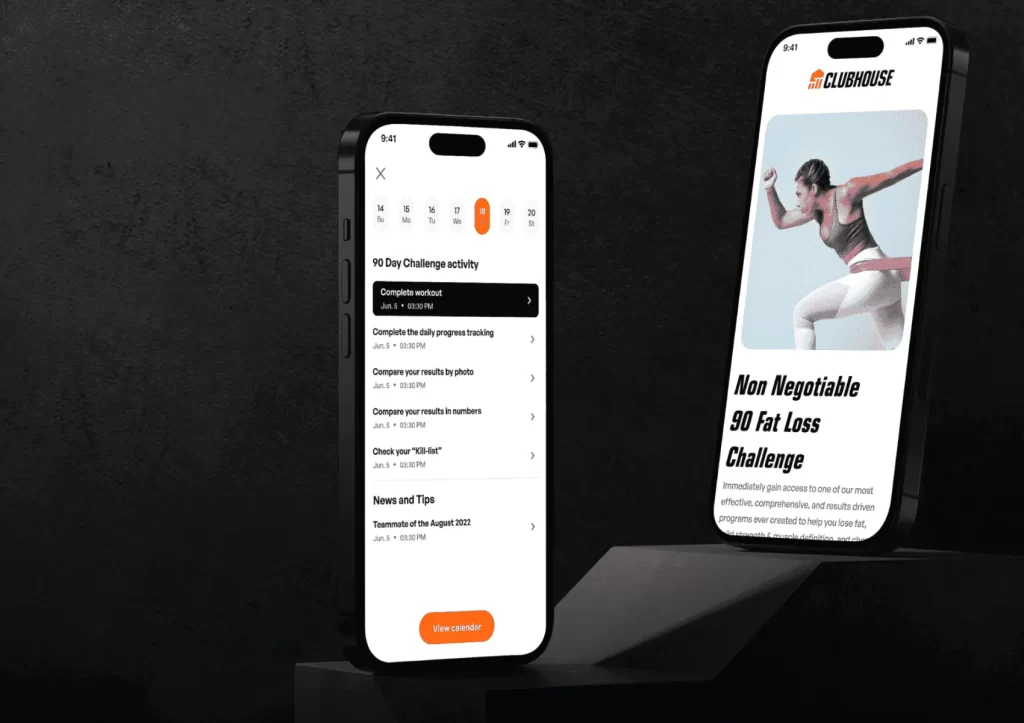
Alternative-spaces crafted Healthy Freelancer, a health and fitness app that epitomizes a user-centric and intuitive app design. Its thoughtfully designed user experience provides users with a seamless and comprehensive journey. The app was purpose-built for individuals engaged in remote work, embracing a sedentary routine, and seeking regular reminders to nurture wellness practices and physical activity.
Summing up
Amidst ongoing global crises, the surging popularity of yoga, meditation, and mindfulness stands as a testament to the growing need for solace. The realm of yoga app development begins with assembling the right team, but prior to that, delving into market and competitor analysis is key. This understanding shapes what you can offer to your users.
At Alternative-spaces, we’re equipped to guide your yoga app journey at any phase. Even if it’s just a concept, our Discovery Phase can map out a realistic timeline and budget tailored to your requirements. Whether you’re stepping in or scaling up, we’re here to transform your vision into a tangible and transformative reality. Contact us today to talk to our expert about youe app idea.
FAQ
Q1: How can a yoga app benefit practitioners?
A1: A yoga app offers on-the-go access to guided sessions, personalized routines, and progress tracking, enabling users to practice anytime, anywhere.
Q2: What are the essential features of a successful yoga app?
A2: A successful yoga app should include features like customizable workouts, video tutorials, progress tracking, meditation sessions, and a user-friendly interface.
Q3: How much does it cost to develop a yoga app?
A3: The cost varies based on factors like complexity, features, platforms, and development team rates. On average, it can range from $20,000 to $100,000 or more.
Q4: What sets a great yoga app apart from the rest?
A4: A great yoga app offers seamless user experience, real-time feedback, a variety of yoga styles, social sharing options, and regular updates to keep users engaged and motivated.
Content created by our partner, Onix-systems.
Source: https://onix-systems.com/blog/yoga-mobile-app-development-guide Home
Home